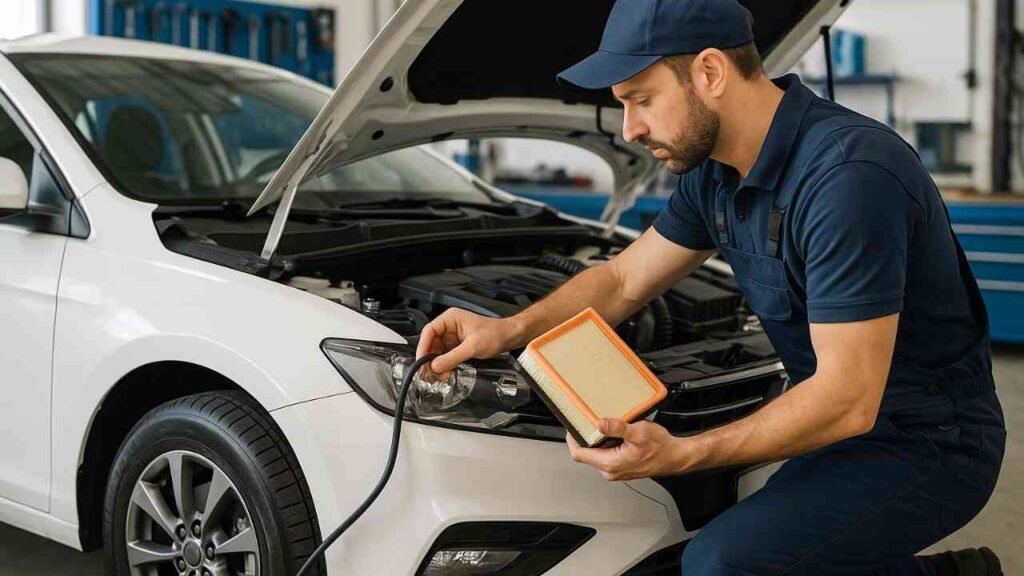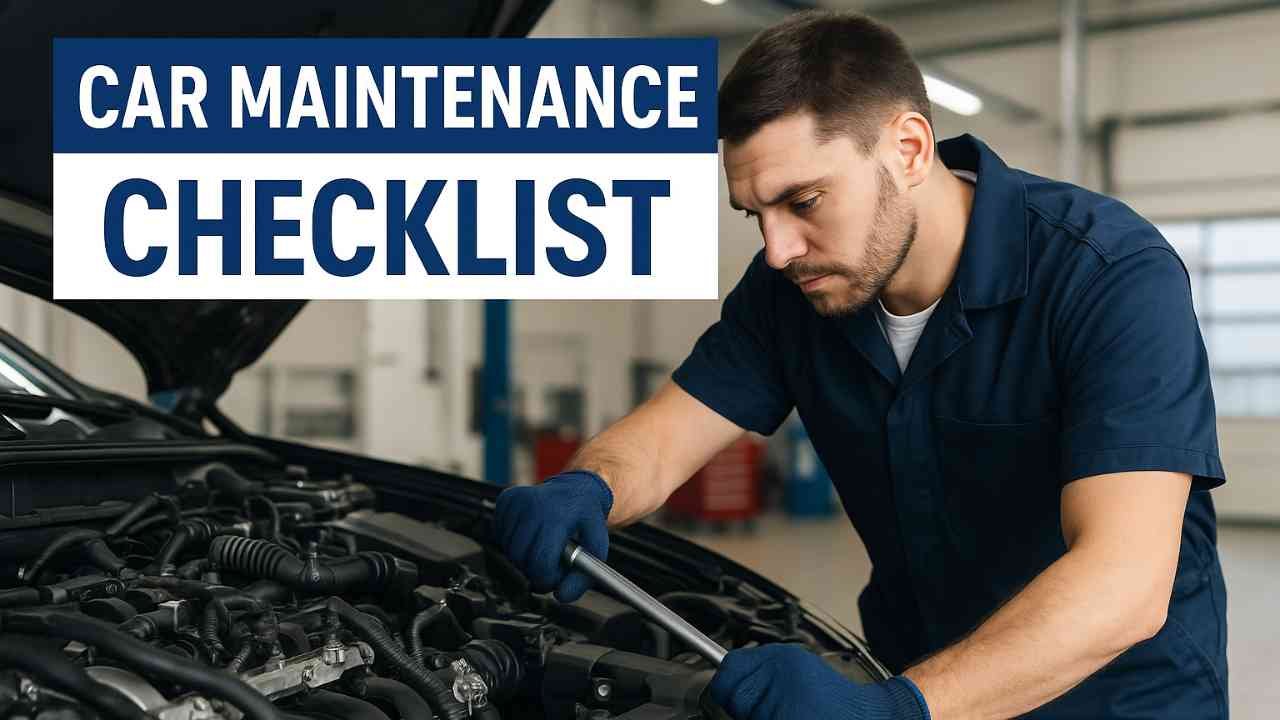Introduction
Regular car maintenance is crucial for keeping your vehicle in top condition, improving its longevity, and ensuring safety. Following a car maintenance checklist ensures that you don’t miss any important steps. In this guide, we’ll cover the essential tasks every car owner should do to maintain their vehicle effectively.
Check and Change the Engine Oil Regularly

Why It’s Important:
Engine oil is the lifeblood of your car’s engine. It lubricates the moving parts, prevents overheating, and ensures smooth operation. Regular oil changes help prevent engine wear and improve fuel efficiency.
- How Often: Generally, it’s recommended to change the oil every 3,000 to 5,000 miles, but check your car’s manual for specific recommendations.
- Tip: Always replace the oil filter when changing the oil for better performance.
Inspect and Replace the Air Filter
Why It’s Important:
A clean air filter allows the engine to breathe better, which improves fuel efficiency and engine performance. Over time, the air filter gets clogged with dirt and debris, leading to decreased performance.
- How Often: Check the air filter every 12,000 miles and replace it as needed.
- Tip: If you often drive in dusty conditions, consider replacing the air filter more frequently.
Monitor Tire Pressure and Condition
Why It’s Important:
Proper tire maintenance improves safety, fuel efficiency, and tire lifespan. Under-inflated tires can cause more rolling resistance, while over-inflated tires can lead to blowouts.
- How Often: Check tire pressure at least once a month and before long trips.
- Tip: Rotate tires every 6,000 to 8,000 miles to ensure even wear.
Inspect Brakes Regularly
Why It’s Important:
Your car’s braking system is one of the most critical safety features. Regular brake inspections ensure that your brakes are functioning properly and help prevent accidents.
- How Often: Check your brakes every 12,000 miles or when you notice any unusual noises or decreased braking performance.
- Tip: If you feel vibrations or hear squeaking when braking, it’s time for a brake inspection.
Check the Battery
Why It’s Important:
A healthy battery ensures that your car starts reliably and powers electrical systems. Over time, batteries can lose their charge or corrode, leading to poor performance.
- How Often: Inspect your battery every 6 months for corrosion and check the charge.
- Tip: Clean the battery terminals to prevent corrosion. If your battery is over 3 years old, consider replacing it.
Replace Worn-Out Windshield Wipers
Why It’s Important:
Good visibility is key to safe driving, and windshield wipers play a crucial role in keeping your view clear in rainy or snowy conditions.
- How Often: Replace wiper blades every 6 to 12 months, or when they start leaving streaks on the windshield.
- Tip: Use your windshield wipers only when necessary to extend their lifespan.
Inspect the Cooling System
Why It’s Important:
The cooling system prevents the engine from overheating by circulating coolant throughout the engine. Regular inspections help avoid expensive repairs and prevent engine failure.
- How Often: Check the coolant levels every 3 to 6 months, and flush the cooling system every 30,000 miles.
- Tip: Always check coolant levels when the engine is cool to avoid burns or injuries.
Check Belts and Hoses
Why It’s Important:
Belts and hoses control essential functions like engine cooling, power steering, and air conditioning. Over time, they can crack, fray, or wear out, leading to breakdowns.
- How Often: Inspect belts and hoses every 30,000 miles or when you notice signs of wear.
- Tip: Replace any worn belts or hoses promptly to avoid major engine repairs.
Change the Fuel Filter
Why It’s Important:
The fuel filter keeps dirt and debris out of your fuel system, ensuring that the engine gets clean fuel. Over time, the filter can become clogged, reducing engine performance.
- How Often: Replace the fuel filter every 20,000 to 40,000 miles, depending on the vehicle.
- Tip: If your car hesitates to start or stutters during acceleration, the fuel filter may need replacing.
Inspect and Replace Spark Plugs
Why It’s Important:
Spark plugs ignite the fuel and air mixture in your engine, making it essential for combustion. Worn or faulty spark plugs can cause misfires, poor acceleration, and increased fuel consumption.
- How Often: Check spark plugs every 30,000 miles, and replace them as needed.
- Tip: Use the recommended spark plugs for your car’s make and model to ensure optimal performance.
Conclusion
Keeping up with regular car maintenance is essential to ensuring the longevity, safety, and efficiency of your vehicle. By following this car maintenance checklist, you can prevent major breakdowns, improve your car’s performance, and avoid expensive repairs. Make sure to stay on top of these maintenance tasks, and your car will continue to run smoothly for years to come.
